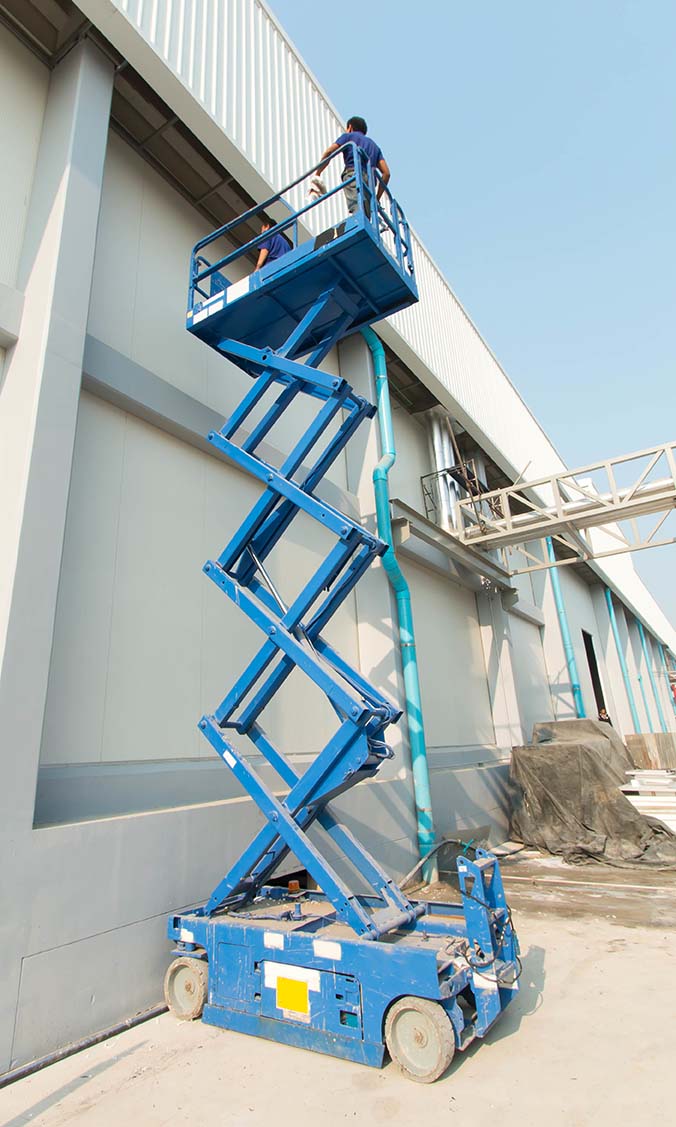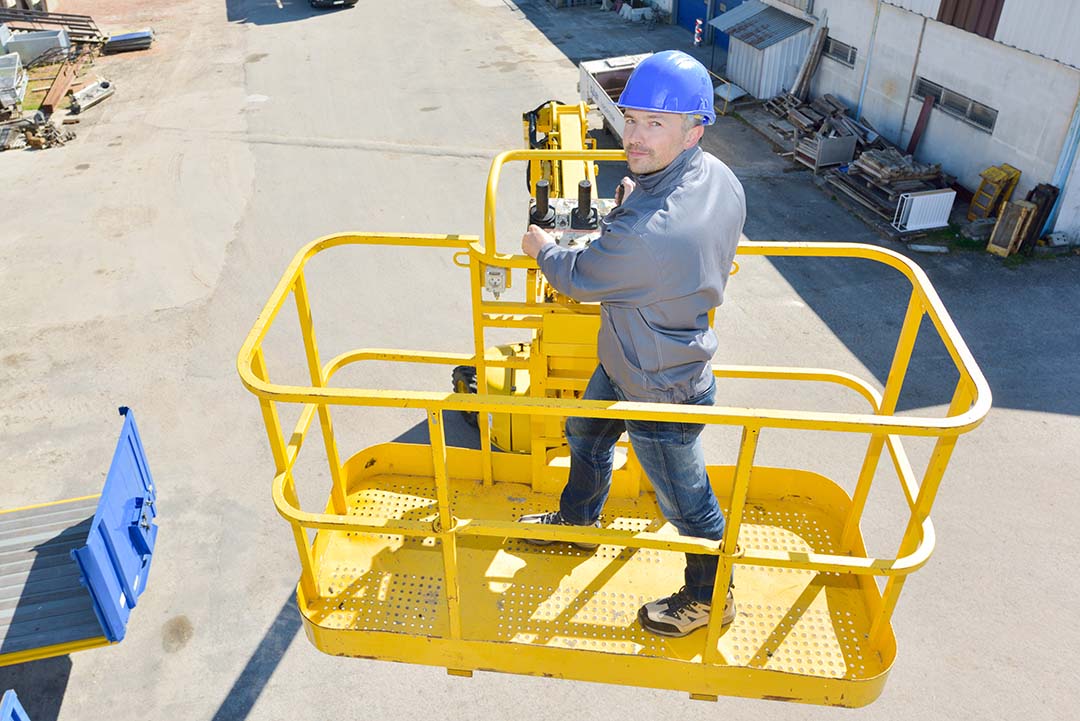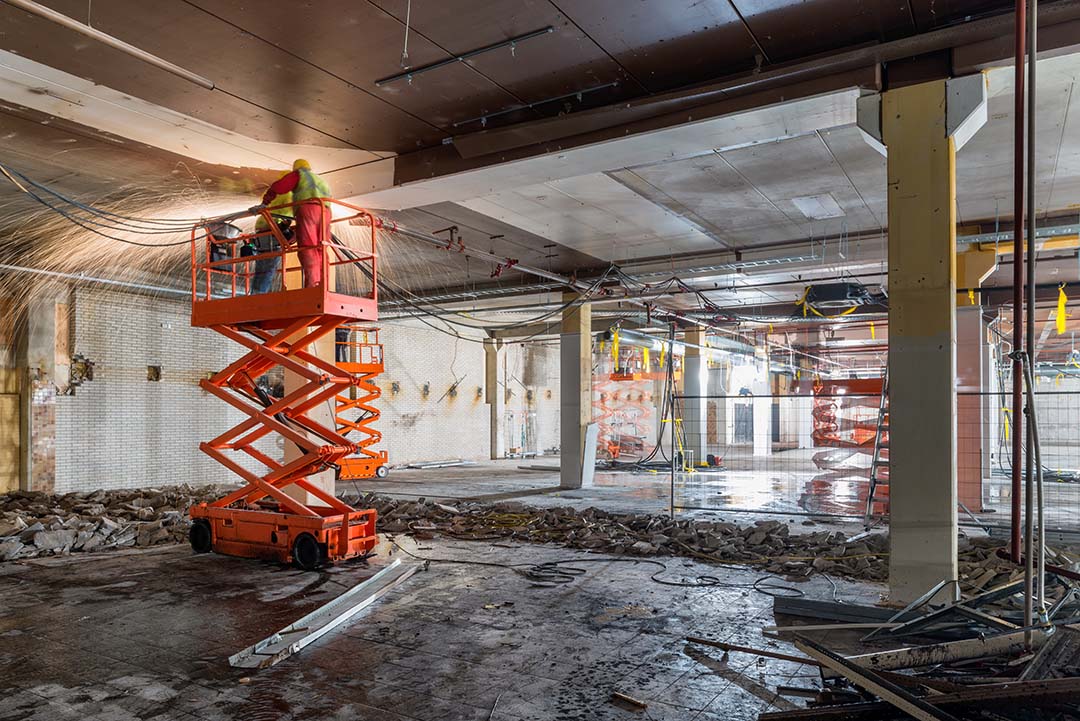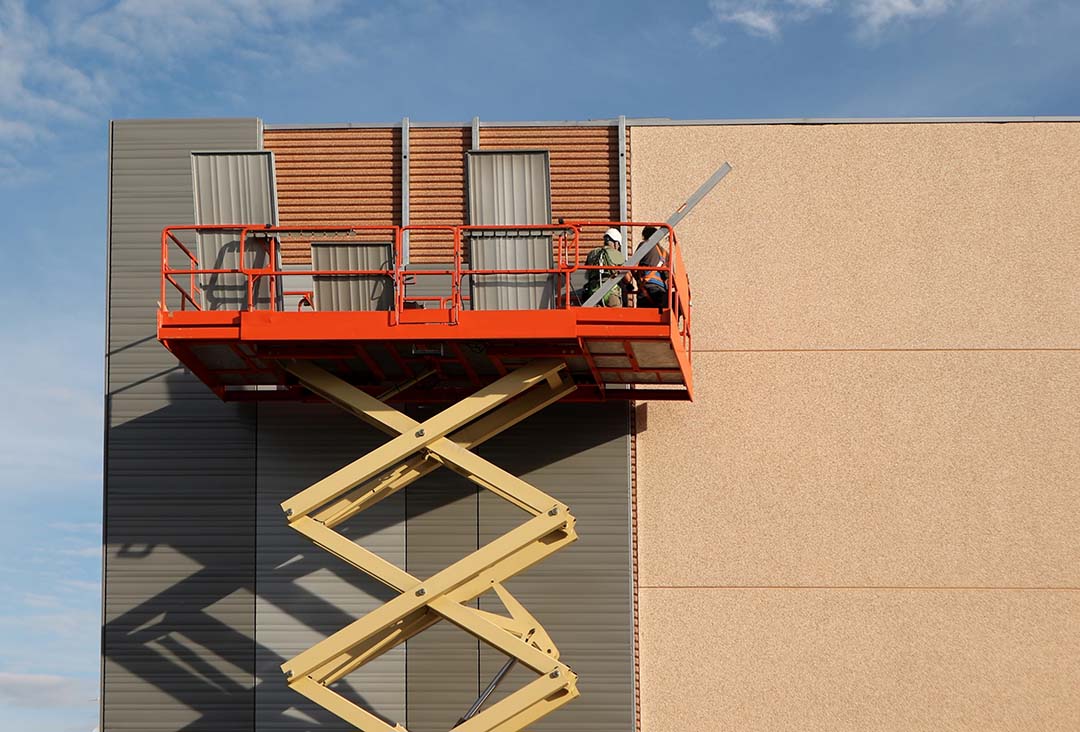Scissor lifts are popular for their flexibility, ease of use, and quick set up. These mobile elevated work surfaces are relatively safe, but employers still must train their employees over the hazards of lifts, as well as proper safe operating procedures for using scissor lifts.
What is a Scissor Lift?

Defined as mobile work platforms designed to safely elevate workers to moderate heights in a variety of settings, scissor lifts are found in a wide range of industries. The Occupational Safety and Health Administration (OSHA) explains that, “Scissor lifts are different from aerial lifts because the lifting mechanism moves the work platform straight up and down using crossed beams functioning in a scissor-like fashion.” They are more stable than aerial lifts but still present many of the same hazards other elevated work surfaces have.
Employer-Provided Training
OSHA requires employees using a scissor lift to be qualified and authorized. Employers must train employees over the correct operation of the lift they will use, including:
- Lift load capacity
- Proper setup
- Materials handling while on the lift
- Hazards in the work environment
- Protecting yourself from hazards
Employees must also receive hands-on training and demonstrate proper operation of the lift they will be using. There are certain situations where employees will be required to receive additional training in lifts:
- Using a new type of lift
- New hazards are created or discovered
- Observed using the lift in an unsafe manner
- Involved in an incident involving the lift
Click Here to See a Free Demo!
Fall Protection

Employees are at significant risk of falls or ejections when using scissor lifts. Employees can fall or be thrown from a scissor lift if the lift is:
- Unstable and tips over or collapses
- Struck by another vehicle
- Not being used safely by workers
These accidents often result in death or severe injuries. Employers must train employees in best practices for fall protection including:
- Always stand firmly on the lift floor
- Keep gates closed
- Never climb on lift railings, planks, or other devices
OSHA requires scissor lifts to have guardrails to prevent falls. Additional fall protection is not generally required by OSHA, but because there is a fall risk, the situation should still receive evaluation from a competent person to determine the fall risk and decide if fall protection is necessary. All employees using fall protection must receive additional fall protection training.
Safe Operating Conditions
Employees are responsible for ensuring the stability of the lift, as it can help prevent falls. Lifts should only be used on flat, stable ground, and outriggers should be used on unpaved surfaces. It’s important to follow all manufacturer specifications for the lift, such as:
- Load capacity
- Maximum wind speeds for use
- Materials handling limits
Operators should never override safety devices. Work zone warnings should also be used to alert workers and vehicles of the area and can include cones and signs.
Struck-by and Caught-between Hazards
- Ceilings
- Walls
- Signs
- Trees
- Poles
Being struck by or caught between objects can lead to serious injuries, in addition to potentially being knocked out of the lift. Before using the lift, the area should be checked for potential hazards, especially overhead. Use caution if you can’t avoid working near overhead hazards, especially when raising or moving the lift. Potential hazards aren’t limited to just those using the lift, as tools or supplies falling from the platform are dangerous to anyone below. Workers should restrict access to the area below the lift and use safety devices such as lanyards and toe boards to reduce the risk of dropped object hazards.
Electrical Hazards

While working on a scissor lift, employees are at risk of electrocution or shock from power and communications lines, as well as overhead electrical fixtures. It is dangerous to touch energized high-voltage power lines, directly or with the lift, because they can kill you instantly. Even if a worker doesn’t touch the lines, an arc flash (a sudden explosion of energy) can injure or kill. All power lines and communication cables should be treated as though they are energized. Unless told to stay further back by a qualified electrician or utility company representative, workers should remain at least 10 feet, or 3 meters, away. If employees must be less than 10 feet away, the employer or foreman is responsible for deenergizing the lines and ensuring that the area is safe. Only qualified lineman electricians with special equipment may ever work close to energized lines.


